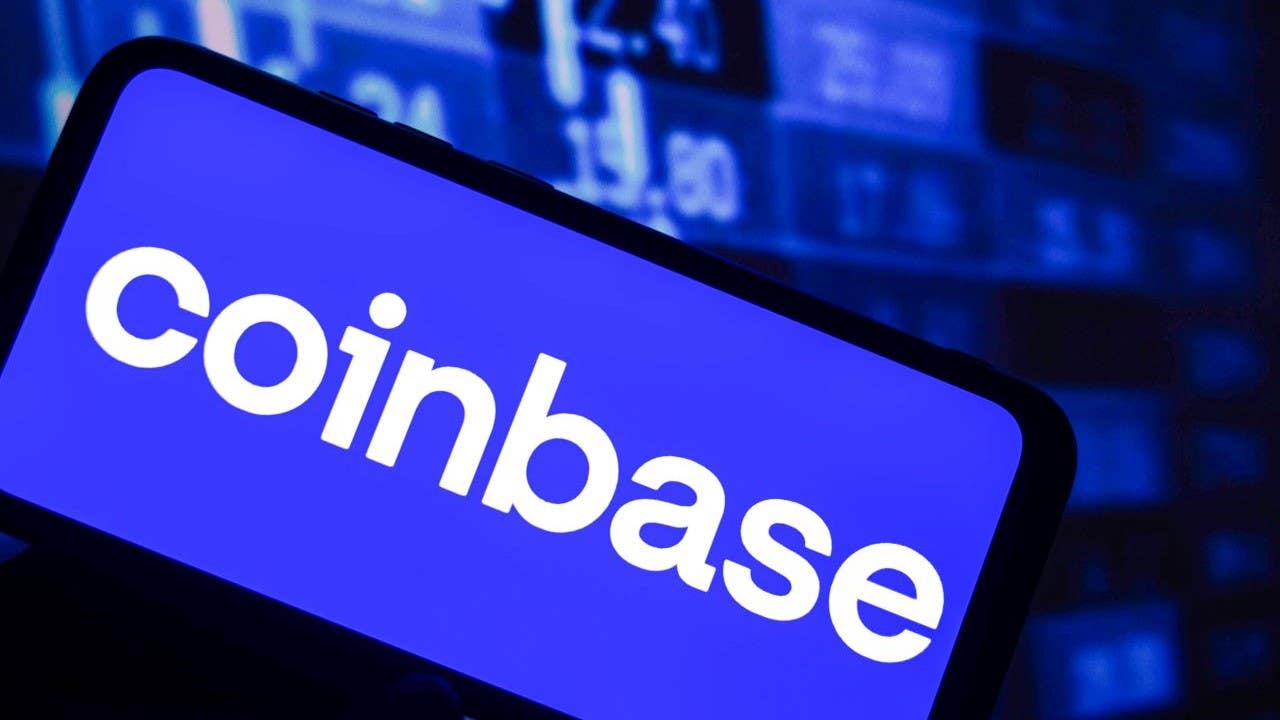What is Coinbase and how does it work?

The Bankrate promise
At Bankrate we strive to help you make smarter financial decisions. While we adhere to strict , this post may contain references to products from our partners. Here's an explanation for .
Our writers and editors used an in-house natural language generation platform to assist with portions of this article, allowing them to focus on adding information that is uniquely helpful. The article was reviewed, fact-checked and edited by our editorial staff prior to publication.
In a short period of time, cryptocurrency has gone from a small, alternative investment to one worth hundreds of billions of dollars collectively. Whether you are looking to invest in crypto or use it as a form of payment, you have likely heard of Coinbase. After all, with tens of millions of users, it’s one of the most popular cryptocurrency exchanges. It’s also one of the easiest ways to buy cryptocurrency which has helped fuel its explosion in popularity.
In a nutshell, Coinbase is a cryptocurrency exchange where you can buy popular coins like Bitcoin, Ethereum and Solana. Not every coin is supported on Coinbase, but there are more than 260 different types of cryptocurrencies on the platform. Meanwhile, there are thousands of different cryptocurrencies available worldwide. Still, Coinbase lets you trade the most popular types of crypto, so it works well for most purposes.
This all makes Coinbase an option for new crypto investors to buy and sell their favorite coins. But is Coinbase safe to use? What about the fees? We’ll address these questions and more below.
The Securities and Exchange Commission sued Coinbase in June 2023, alleging it had illegally operated as an exchange, broker-dealer and clearing agency, and offered and sold unregistered securities. The lawsuit said Coinbase knowingly violated securities laws that are designed to protect investors. The case is expected to move to appeals courts and maybe even the U.S. Supreme Court, if it’s not settled first.
How to use Coinbase: A beginner’s guide
If you’re new to Coinbase and perhaps even cryptocurrency in general, it can all seem overwhelming. Don’t worry, it’s actually quite simple, and we’ll explain how to get started.
How to open a Coinbase account
Opening a Coinbase account is easy. Here’s what Coinbase says you’ll need to create an account:
- Be at least 18 years old
- A government-issued photo ID, such as a driver’s license or state ID
- A computer or smartphone with internet access
- A phone number for SMS verification
- The latest version of your internet browser
If none of this is a problem, you’re ready to create an account. To do so, enter your first and last name, email, state of residence, and create a password. You’ll also have to check the box confirming you are at least 18 years old. The only thing left to do after that is to set a password. Be sure to set a strong, unique password to keep your account safe.
You’ll also want to add a payment method so you can move money into your Coinbase account. U.S. customers can use a variety of methods, including a bank account, debit card, PayPal, Apple Pay, or wire transfer. Note that PayPal is only available to U.S. customers, and you can only use it to buy cryptocurrency or to cash out.
Once you create your account and add a payment method, you are ready to start trading cryptocurrency.
What cryptocurrencies does Coinbase support?
While Coinbase doesn’t support every cryptocurrency, it supports many of the most popular coins. So most people buying and selling on Coinbase won’t run into any issues. However, more advanced traders might find they need to set up an account elsewhere.
There are more than 260 coins available on Coinbase. We won’t list every single one, but here are some of the most popular ones that Coinbase provides access to:
You can find a complete list on the Coinbase website.
How much does it cost to trade?
Fees on Coinbase can be a bit complicated, but they depend on your account type, the size of the transaction and the funding source. Several factors can affect the fee you ultimately pay, including your country/region, payment method, and the product.
For smaller transactions, you’ll pay a spread mark-up of 0.5 percent of your trade value plus a flat fee based on the size of your transaction, as follows:
| Transaction amount | Fee |
|---|---|
| $10 or less | $0.99 |
| More than $10 and up to $25 | $1.49 |
| More than $25 and up to $50 | $1.99 |
| More than $50 and up to $200 | $2.99 |
Although one Bitcoin costs well above these dollar amounts, Coinbase lets you buy fractions of coins, so you can still buy small amounts. The cost of the spread mark-up is already figured into your purchase or sale price.
At amounts above $200, you’ll pay a spread mark-up of 0.5 percent of your total trade value, and Coinbase’s variable fee on transactions above $200 is charged as follows, depending on how you pay for the crypto:
| Payment method | Fee |
|---|---|
| U.S. bank account | 1.49 percent |
| Coinbase USD wallet | 1.49 percent |
| Debit card | 3.99 percent |
| Instant card withdrawal | Up to 1.5 percent of any transaction; minimum fee of $0.55 |
As you may have also noticed, the fee eats up a significant chunk of your purchase for those small amounts.
If you’re a more advanced trader, Coinbase Pro may be worth considering. With Pro, you’ll find additional trading options and upgraded charting features. Coinbase Pro also offers a more straightforward (and lower) fee structure, too.
The easiest way to familiarize yourself with Coinbase’s fees is to preview an order, which you can do using the steps below.
How to buy and sell cryptocurrencies on Coinbase
If you have already linked a payment method to Coinbase, buying and selling couldn’t be easier. When logged into your Coinbase account, here are the steps to buy cryptocurrency:
- Click the Buy/Sell button in the upper right-hand corner.
- Specify whether this is a one-time purchase or daily/weekly/monthly.
- Enter the amount of your purchase.
- Select the cryptocurrency to buy.
- Select your payment method.
Keep in mind that when you buy using a bank account, the transaction typically takes 3 to 5 business days to complete, according to Coinbase.
Selling on Coinbase is even easier. All you have to do is enter how much you want to sell (or select “sell all”). Then indicate which coin you want to sell and how you want to be paid. Note that the same fees apply whether buying and selling.
Is Coinbase safe?
It’s natural to wonder whether Coinbase is safe, especially if you are investing a lot. Plus, it’s still a relatively new platform. While Coinbase is generally a secure platform and has security measures such as two-factor authentication, it’s not impervious to attacks. A quick search online reveals reports of Coinbase users having their accounts drained overnight. Experts point to SIM swapping as one cause of these incidents.
While this may sound scary, it doesn’t mean you have to avoid Coinbase. There are measures you can take to make things even more difficult for potential hackers, such as using what’s called a non-custodial wallet. Another option is a hardware wallet.
The idea behind these different types of wallets is that you aren’t relying on Coinbase to store your money. They allow you to store your own crypto using an app, software, or hardware. So even if someone gains access to your Coinbase account, that won’t give them access to the wallet, where your cryptocurrency is actually stored.
The downside to this approach is it requires you to remember your own password, also known as a private key. If you have heard reports of people losing millions because they got locked out of their cryptocurrency wallet, they probably have a non-custodial wallet. While this method is more secure, the onus is on you to ensure you can access your wallet.
Bottom line
Coinbase is an easy way for those who are new to cryptocurrency to get started. Its easy-to-use interface lets people buy and sell crypto in just a few clicks. While not every type of cryptocurrency is supported, you will find many of the most popular coins there.
One thing to keep in mind about Coinbase is that the fees can add up, especially when buying small amounts of crypto. For example, you will pay a $0.99 variable fee when buying up to $10 worth of cryptocurrency, meaning your fee could be nearly 10 percent (and that’s on top of the spread mark-up already built into the price).
These are among the biggest reasons that while Coinbase is useful for beginners, it is not for everyone. If you want to avoid Coinbase’s high fees and long processing times, there are plenty of other ways to buy cryptocurrencies such as Bitcoin.
And if you do choose to invest in cryptocurrency, make sure it’s part of a diversified investment strategy. That means investing in tried-and-true assets such as stocks and bonds, and real estate if you choose. Also, don’t forget to keep cash on hand, ideally in a money market account or a high-yield savings account. Taking these steps should help you weather the volatility that often comes with investing in cryptocurrency.
Editorial Disclaimer: All investors are advised to conduct their own independent research into investment strategies before making an investment decision. In addition, investors are advised that past investment product performance is no guarantee of future price appreciation.
Related Articles



